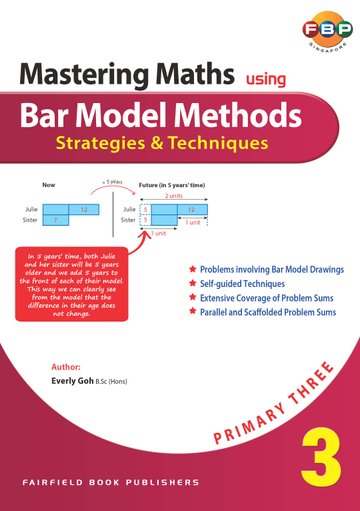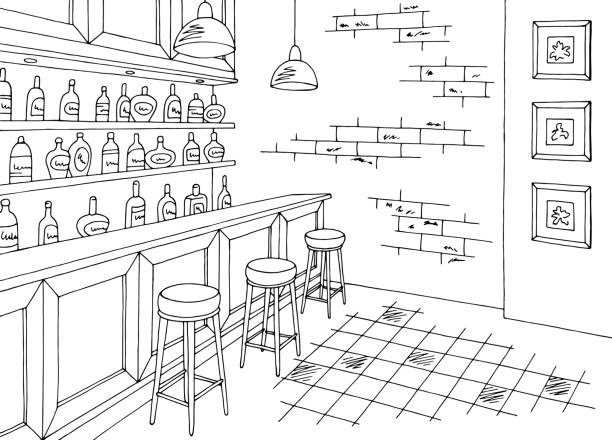Why educators trust bar model drawing techniques for teaching math
Wiki Article
Exploring Bar Design Illustration Techniques: A Comprehensive Overview to Visualizing Mathematics Concepts
Bar design drawing methods act as a valuable source for both educators and trainees in visualizing mathematical concepts. These versions streamline complicated numerical relationships, assisting in the understanding of enhancement, multiplication, department, and subtraction. This guide outlines reliable approaches for applying bar models, cultivating energetic involvement and real-world links. As visitors explore the functional applications and teaching pointers, they will reveal exactly how these techniques can change their strategy to maths.Recognizing the Basics of Bar Design Illustration
Bar model attracting acts as an effective aesthetic device in mathematics, helping with the understanding of numerical relationships and analytical methods. This technique entails standing for numbers and their relationships through rectangular bars, making it easier to picture procedures such as addition, reproduction, division, and reduction. Each bar's size represents a certain value, permitting students to compare amounts and recognize percentages clearly.To create a bar design, one starts by recognizing the trouble's essential elements, commonly breaking it down right into components that can be visually stood for. For example, in a simple addition problem, two bars can be drawn, with their lengths representing the addends. The combined size illustrates the amount. Furthermore, bar models can be adapted for much more complex issues, consisting of ratios and fractions, by readjusting benches appropriately. Grasping these basics lays a strong structure for reliable problem-solving and much deeper mathematical understanding.
Advantages of Using Bar Designs in Mathematics
Utilizing bar models in maths supplies many advantages that enhance knowing and understanding. These aesthetic depictions help pupils in comprehending intricate ideas by breaking them down right into manageable elements. Bar designs offer a clear structure for highlighting partnerships between numbers, making abstract concepts extra concrete. They promote a much deeper understanding of mathematical procedures and promote analytic by allowing students to picture the information they are working with.Bar models support the development of essential thinking abilities, as pupils need to examine and analyze the aesthetic information to draw verdicts. This method urges energetic involvement with the material, reinforcing retention and proficiency of mathematical principles. By promoting a solid foundation in aesthetic proficiency, bar versions empower students to approach numerous mathematical challenges with confidence. Overall, the integration of bar versions into maths education and learning confirms useful in cultivating both comprehension and analytical capacities among pupils.
Using Bar Designs to Addition and Subtraction
Bar models offer as an effective device for visually standing for addition and reduction troubles. By showing the connection between numbers, they boost understanding and promote analytic. Furthermore, real-life applications of these designs can aid learners understand mathematical principles in practical contexts.Standing For Enhancement Aesthetically
Aesthetic aids can significantly boost their understanding of these procedures when students encounter enhancement and reduction problems. Bar versions act as efficient tools for representing addition. By splitting a rectangular shape right into sectors that represent the numbers entailed, trainees can picture the relationship in between the quantities. For example, if a pupil needs to add 3 and 5, they can develop a bar split into two areas: one area representing 3 and the other representing 5. This clear representation not only streamlines the enhancement process however likewise enhances the idea of integrating quantities. As trainees control these visual help, they establish a deeper comprehension of addition, causing improved problem-solving skills and greater self-confidence in their mathematical capacities.
Subtraction With Bar Versions
Reduction is often regarded as an extra complex procedure than addition, bar designs can properly clarify this process for trainees. By visually standing for the amounts included, pupils can better comprehend how numbers connect to one another. In a bar version for subtraction, one bar represents the total, while another indicates the amount being deducted. This visual difference helps students understand the principle of "removing." As an example, if a bar shows 10 systems, and one more bar standing for 4 units is removed, trainees can easily see that 6 devices continue to be. This method not just cultivates understanding of subtraction but additionally aids in developing problem-solving skills, permitting students to picture their mathematical reasoning and improve their general understanding of mathematical principles.Real-Life Application Examples
Comprehending reduction via bar models lays a structure for applying these methods in real-life situations. In different contexts, such as budgeting or purchasing, people can picture exactly how much cash remains after costs. If a person has $50 and spends $20, a bar design can represent the overall amount and the spent section, illustrating that $30 is left. In addition, parents can make use of bar models to help youngsters comprehend the amount of more items need to be added to finish a set, such as having 3 apples and needing five. This aesthetic representation streamlines complicated troubles, promoting comprehension and retention. Ultimately, bar designs serve as effective tools in day-to-day decision-making, improving mathematical understanding in practical scenarios.Envisioning Multiplication and Division With Bar Designs
In checking out the application of bar models for multiplication and department, it is crucial to grasp their fundamental principles. Creating reproduction designs permits students to envision connections in between numbers, while efficient department here approaches can be shown through these aesthetic help. This strategy improves comprehension and analytical skills in mathematics.Recognizing Bar Models
Bar versions work as a powerful aesthetic tool for highlighting the principles of multiplication and division. They allow learners to stand for mathematical partnerships in a structured style, helping with a deeper understanding of these procedures. In multiplication, bar versions present groups of equivalent size, permitting individuals to picture the overall quantity when combining these teams. On the other hand, in department, bar designs aid illustrate exactly how an overall is separated into smaller sized, equivalent parts, clarifying the idea of dividing. By employing these aesthetic help, trainees can grasp the underlying concepts of multiplication and department better. This method not just boosts understanding however additionally supports analytic skills, making bar designs an invaluable property in mathematical education and learning.Building Multiplication Versions
Constructing reproduction models using bar diagrams supplies a clear technique for picturing the process of multiplication. These models allow students to stand for reproduction as teams of equal parts, making abstract ideas more concrete. As an example, to illustrate (3 times 4), a student can attract one bar split into 3 equivalent sectors, each standing for 4 systems. Additionally, creating a 2nd bar with the very same length reinforces the understanding of duplicated enhancement, as each section represents one group. This graph not only help in understanding reproduction yet also improves analytical abilities. By utilizing bar versions, pupils can much better comprehend relationships in between numbers and create a robust foundation for much more complicated mathematical ideas, leading to enhanced self-confidence in their capacities.Imagining Department Strategies

Fixing Word Issues Using Bar Version Techniques

In a problem including enhancement and reduction, students can draw separate bars for each amount and after that adjust them to locate the service. This process not just clarifies the issue but additionally cultivates a deeper conceptual understanding. Bar versions can be adapted for various types of word problems, making them versatile throughout various mathematical topics. Eventually, making use of bar models can considerably enhance pupils' analytic skills by giving a clear aesthetic path to get here at the appropriate response.
Integrating Bar Models in Different Mathematics Topics
Bar versions can be seamlessly integrated into numerous mathematics subjects, boosting pupils' understanding of ideas beyond fundamental math. In algebra, these aesthetic devices help in representing formulas and inequalities, allowing students to envision connections between variables. When tackling geometry, bar designs can show the properties of forms and spatial thinking, aiding students understand principles like location and border successfully. In data, bar designs promote the analysis of information sets, permitting pupils to contrast quantities and identify patterns visually. Additionally, incorporating bar models within dimension subjects help in recognizing systems and conversions by providing a concrete depiction of amounts. By using bar designs across various mathematical areas, teachers can promote a much deeper understanding of complex concepts, thereby enhancing problem-solving skills and advertising critical thinking (bar model drawing techniques). This adaptability demonstrates the energy of bar designs as a fundamental device for pupils in their mathematical tripTips for Teaching Bar Models Efficiently
Incorporating bar models into mentor practices calls for thoughtful approaches to maximize their effectiveness. Educators ought to begin by introducing bar models with basic, relatable examples that pupils can easily understand. This aids to build confidence and familiarity with the concept. Progressively increasing the intricacy of issues allows students to apply their abilities gradually. Additionally, educators ought to encourage pupils to create their very own bar models, advertising active involvement and ownership of their knowing.Incorporating collective activities can additionally improve understanding, as pupils go over and resolve problems in teams. Constant responses is important; instructors ought to provide useful commentary on students' bar design representations to assist enhancement. Finally, linking bar designs to real-life scenarios enhances their importance, assisting pupils see the sensible applications of their mathematical skills. By executing these approaches, instructors can properly harness the power of bar designs in their maths guideline.
Often Asked Questions
Can Prevent Versions Be Utilized in Various Other Subjects Besides Mathematics?
Bar versions can indeed be used in different subjects beyond math. They successfully show ideas in scientific research, social research studies, and language arts, assisting to aesthetically represent partnerships, procedures, and concepts for boosted understanding throughout disciplines.What Age Is Finest Fit for Discovering Bar Designs?
Bar designs are best suited for children ages 7 to 12, as they create concrete reasoning abilities during this period (bar model drawing techniques). At this age, students can efficiently grasp abstract concepts through visual depiction and analytic strategiesAre There Digital Tools for Creating Bar Versions?

How Can I Evaluate Student Understanding of Bar Designs?
Reviewing pupil understanding of bar models can entail quizzes, observational assessments, and team discussions. Teachers might likewise examine pupils' finished designs and their capability to explain their thinking, guaranteeing a detailed evaluation of understanding.What Prevail Errors When Utilizing Bar Models?
Usual errors when using bar models include misrepresenting amounts, falling short to properly identify bars, perplexing addition and subtraction, ignoring to use constant ranges, and overlooking the importance of clear visual separation between different aspects.In addition, bar models can be adapted for much more complicated issues, consisting of fractions and proportions, by changing the bars appropriately. Reduction is frequently regarded as a more complex procedure than addition, bar versions can properly clarify this process for students. In a bar model for subtraction, one bar represents the total amount, while an additional suggests the quantity being subtracted. If a bar reveals 10 systems, and one more bar standing for 4 systems is gotten rid of, pupils can easily see that 6 devices stay. When splitting an overall into equivalent teams, pupils can attract a long bar to represent the entire and after that segment it into smaller sized bars that indicate each team.
Report this wiki page